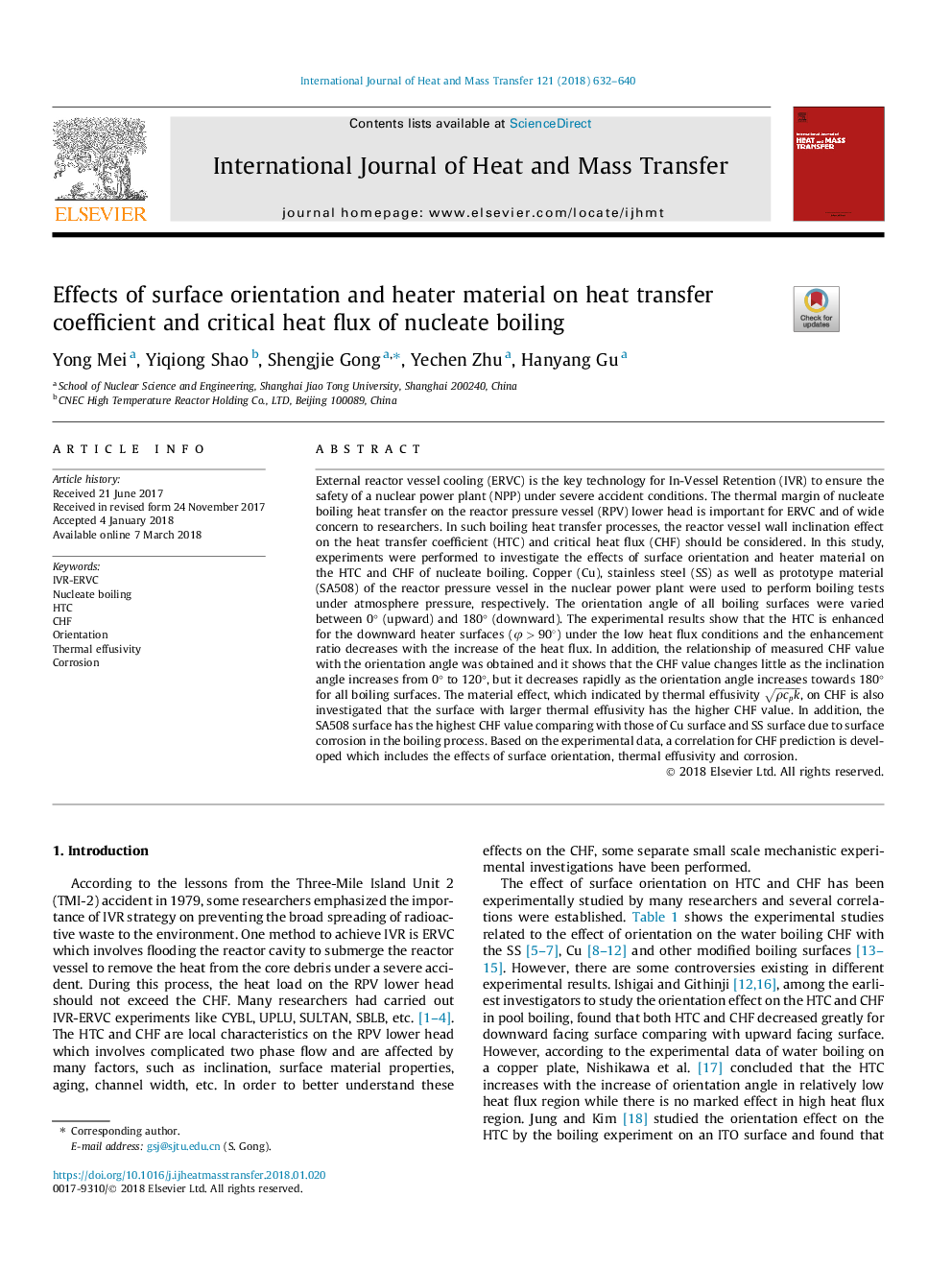| کد مقاله | کد نشریه | سال انتشار | مقاله انگلیسی | نسخه تمام متن |
|---|---|---|---|---|
| 7054500 | 1458019 | 2018 | 9 صفحه PDF | دانلود رایگان |
عنوان انگلیسی مقاله ISI
Effects of surface orientation and heater material on heat transfer coefficient and critical heat flux of nucleate boiling
ترجمه فارسی عنوان
اثر جهت گیری سطح و مواد بخاری بر روی ضریب انتقال حرارت و شار گرمای جوش هسته ای
دانلود مقاله + سفارش ترجمه
دانلود مقاله ISI انگلیسی
رایگان برای ایرانیان
کلمات کلیدی
موضوعات مرتبط
مهندسی و علوم پایه
مهندسی شیمی
جریان سیال و فرایندهای انتقال
چکیده انگلیسی
External reactor vessel cooling (ERVC) is the key technology for In-Vessel Retention (IVR) to ensure the safety of a nuclear power plant (NPP) under severe accident conditions. The thermal margin of nucleate boiling heat transfer on the reactor pressure vessel (RPV) lower head is important for ERVC and of wide concern to researchers. In such boiling heat transfer processes, the reactor vessel wall inclination effect on the heat transfer coefficient (HTC) and critical heat flux (CHF) should be considered. In this study, experiments were performed to investigate the effects of surface orientation and heater material on the HTC and CHF of nucleate boiling. Copper (Cu), stainless steel (SS) as well as prototype material (SA508) of the reactor pressure vessel in the nuclear power plant were used to perform boiling tests under atmosphere pressure, respectively. The orientation angle of all boiling surfaces were varied between 0° (upward) and 180° (downward). The experimental results show that the HTC is enhanced for the downward heater surfaces (Ï>90°) under the low heat flux conditions and the enhancement ratio decreases with the increase of the heat flux. In addition, the relationship of measured CHF value with the orientation angle was obtained and it shows that the CHF value changes little as the inclination angle increases from 0° to 120°, but it decreases rapidly as the orientation angle increases towards 180° for all boiling surfaces. The material effect, which indicated by thermal effusivity Ïcpk, on CHF is also investigated that the surface with larger thermal effusivity has the higher CHF value. In addition, the SA508 surface has the highest CHF value comparing with those of Cu surface and SS surface due to surface corrosion in the boiling process. Based on the experimental data, a correlation for CHF prediction is developed which includes the effects of surface orientation, thermal effusivity and corrosion.
ناشر
Database: Elsevier - ScienceDirect (ساینس دایرکت)
Journal: International Journal of Heat and Mass Transfer - Volume 121, June 2018, Pages 632-640
Journal: International Journal of Heat and Mass Transfer - Volume 121, June 2018, Pages 632-640
نویسندگان
Yong Mei, Yiqiong Shao, Shengjie Gong, Yechen Zhu, Hanyang Gu,
